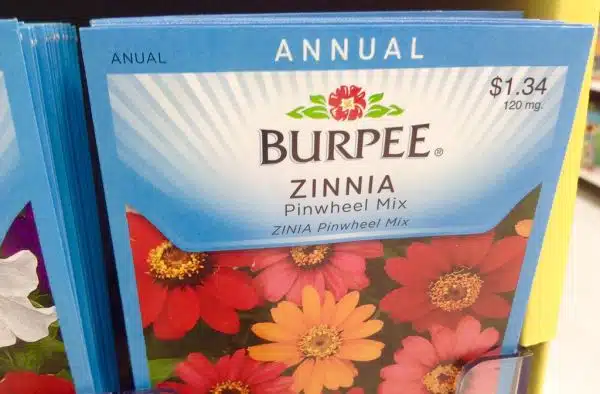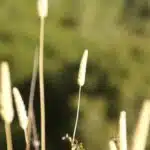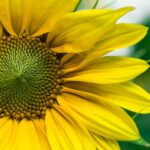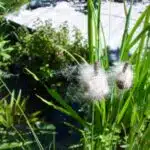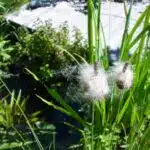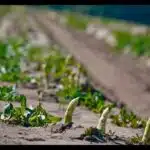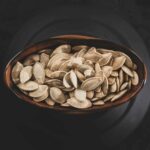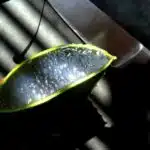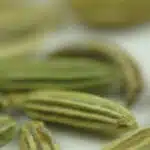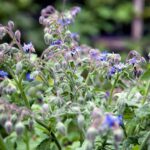Zinnias are one of the most popular and beloved flowers among gardeners. They come in a wide range of colors, sizes, and shapes, making them a versatile addition to any garden or landscape. One of the benefits of growing zinnias is that they produce an abundance of seeds that can be harvested and saved for future planting seasons. Harvesting and saving zinnia seeds is a cost-effective way to ensure a continuous supply of these beautiful flowers without having to purchase new plants every year.
As a horticultural expert, it is my pleasure to share with you some tips on how to successfully harvest and save zinnia seeds. With the right techniques and tools, collecting zinnia seeds can be a fun and rewarding experience that will provide you with many years of beautiful blooms. In this article, I will guide you through the process of harvesting zinnia seeds, including when to harvest them, how to prepare the seedheads for collection, and how to store the seeds for future use. So whether you are an experienced gardener or a beginner looking for ways to save money while still enjoying beautiful flowers, keep reading to learn all about harvesting and saving zinnia seeds.
The Benefits Of Growing Zinnias
Zinnias are an annual flower that is easy to grow and maintain. These beautiful flowers come in a wide range of colors, shapes, and sizes and can add a pop of color to any garden design. Zinnias are also versatile and can be grown in garden beds, containers, or as cut flowers.
Growing techniques for zinnias are relatively simple. They require full sun exposure, well-drained soil, and regular watering. It is best to plant zinnia seeds directly into the ground after the danger of frost has passed. This will ensure that the plants have enough time to mature before the first frost of fall.
Zinnias are also great for attracting pollinators such as butterflies and bees to your garden. By adding these beautiful flowers to your garden design, you not only create an aesthetically pleasing space but also contribute to the health and well-being of your local ecosystem. Understanding zinnia seed production is the first step in harvesting and saving seeds for future growing seasons.
Understanding Zinnia Seed Production
Zinnia plants have an annual life cycle, meaning they need to be replanted each year. Pollination occurs when pollen is transferred from the male reproductive organs of the flower to the female reproductive organs, allowing for fertilization of the flower. Fertilization is the process of combining the male and female gametes during sexual reproduction in order to form a zygote. Once a flower has been fertilized, it will produce a seed that can be harvested and saved for later planting.
Plant Life Cycle
Understanding the plant life cycle is crucial in the production and harvest of zinnia seeds. Zinnias are annual plants that complete their life cycle in a single growing season. The importance of understanding this process lies in its impact on seed production.
The plant life cycle for zinnias begins with germination, followed by the growth of roots, stems, and leaves. During the vegetative stage, the plant grows and matures until it reaches the reproductive stage, where flowers begin to bloom. These blooms eventually turn into seed heads containing hundreds of small seeds. This is when zinnias are ready for harvest.
To properly save zinnia seeds, it is important to wait until the seed heads have fully matured on the plant before harvesting them. Once harvested, allow them to dry out completely before removing the seeds from their casings or husks. Store them in a cool, dry place until ready for planting in future seasons. Understanding these stages will ensure successful seed production year after year.
In conclusion, understanding the plant life cycle of zinnias is essential to ensure proper seed production and harvest. From germination to maturity and reproduction, each stage plays a crucial role in producing viable seeds for next year’s garden. By following these steps carefully to collect and store zinnia seeds properly, they can continue adding beauty to gardens for years to come!
Pollination And Fertilization
Pollination and fertilization are crucial stages in zinnia seed production. Cross-pollination between different zinnia plants benefits seed quality by increasing genetic diversity, resulting in stronger and more vigorous offspring. The role of insects in pollination is essential, as they transfer pollen from the male to the female reproductive structures of the flower. Bees, butterflies, and moths are frequent visitors of zinnias due to their vibrant colors and sweet nectar, making them ideal pollinators.
After pollination occurs, fertilization takes place when the male sex cells from the pollen combine with the female sex cells within the ovules of the flower. This process leads to the development of seeds within the plant’s seed head. In zinnias, each individual flower produces a single ovary that contains one ovule. Therefore, each seed head can potentially produce hundreds of small seeds that will eventually grow into new plants.
By understanding the importance of cross-pollination and insect involvement in fertilization, gardeners can ensure successful zinnia seed production year after year. It is essential to provide a welcoming environment for pollinators by planting various flowers that bloom throughout the growing season. This not only benefits zinnia production but also serves as a way to support local ecosystems by providing food and habitat for beneficial insects.
Choosing The Right Zinnia Varieties For Seed Saving
Understanding Zinnia Seed Production has provided us with the basic knowledge on how zinnia plants produce seeds. Now, it’s time to delve into the process of Choosing the Right Zinnia Varieties for Seed Saving. Selecting varieties is essential to ensure that we are getting the best quality seeds that will grow into healthy plants.
When selecting zinnia varieties for seed saving, it is important to consider their growth patterns and characteristics. Choose varieties that have a strong growth habit and are resistant to pests and diseases. These traits will ensure that our seedlings will thrive and produce high-quality flowers.
Once we have selected the suitable zinnia varieties, it’s time to take care of our seedlings. Provide them with adequate water and sunlight as they grow to encourage healthy development. Regularly check for any signs of disease or pests and address them immediately to prevent further damage. Taking care of our seedlings will guarantee that we have healthy plants that will produce bountiful seeds.
Now that we know how to select the right zinnia varieties for seed saving and how to take care of our seedlings, let’s move on to when to harvest zinnia seeds.
When To Harvest Zinnia Seeds
Harvesting zinnia seeds can be a rewarding experience for gardeners who want to preserve their favorite flower species. However, timing is crucial when it comes to collecting mature seeds. The best harvesting techniques involve inspecting the flowers regularly and looking for signs of seed maturity. This way, you can ensure that the seeds are viable and capable of producing healthy plants.
One indication of seed maturity is the color of the flower head. Zinnias typically have bright and vibrant colors when they are in full bloom. As they start to age, the petals may fade or wilt, and the center disk will begin to shrink or dry out. When the disk has turned brown or black, it is a sign that the seeds are ripe for harvesting. You can also gently touch the disk and feel if it’s hard or soft; if it’s firm, it means that the seeds have reached maturity.
Another way to check for seed readiness is by examining the seed heads themselves. As soon as you see a significant number of flowers starting to dry out and die back, you should start monitoring them closely. Look for large seed heads with swollen centers as these are usually packed with ripe seeds ready for harvest. You can clip them off with pruning shears or scissors and place them in a paper bag until you’re ready to extract the seeds.
Knowing when to harvest zinnia seeds is essential if you want to ensure successful germination rates in your garden. Once you’ve identified ripe zinnia seeds, it’s time to move on to extracting them from their pods gently. To do this correctly, you’ll need some basic tools such as tweezers or your fingers and a clean surface area where you can work on without losing any precious seeds.
How To Identify Ripe Zinnia Seeds
Metaphorically speaking, identifying ripe zinnia seeds is akin to finding a needle in a haystack. You have to know what you’re looking for and be patient enough to wait until the right moment. However, with the right techniques and harvesting tips, you can ensure that your zinnia seeds are of the highest quality.
One way to identify ripe zinnia seeds is by their color. When the petals of the flower have wilted and turned brown, it’s a good indication that the seeds are ready for harvesting. Another technique is to gently shake the seedhead – if you hear a rattling sound, then it’s likely that the seeds are mature enough to collect.
It’s important to note that not all seedheads will ripen at the same time. Therefore, it’s best to monitor them closely and harvest them individually as they reach maturity. Once you’ve identified a ripe seedhead, use your fingers or scissors to cut it from the stem. Place the seedheads in paper bags or envelopes for safekeeping until you’re ready to prepare them for collection.
Transitioning into the subsequent section about preparing seedheads for collection, it’s crucial that you handle them with care as they contain delicate seeds that need protection from moisture and other external factors.
Preparing Seedheads For Collection
Once the zinnia flowers have bloomed and their petals have fallen off, it is time to prepare the seedheads for collection. Seedhead pruning is a crucial step in this process. Using clean and sharp gardening shears, prune the seedheads from the stem of the plant. It is important to select seedheads that are fully matured and evenly colored. By doing so, you ensure that the seeds are viable and will produce healthy plants in the future.
After you have pruned the seedheads, it is time to store them until they are completely dry. Place them in a paper bag or a container with good airflow, ensuring that they are not overcrowded. The optimal storage temperature for zinnia seeds is between 60-70°F with low humidity levels. Avoid storing them in areas with high moisture levels as this can cause mold growth which can ruin your entire harvest.
Seedhead storage should continue until they have become completely dry and brittle. You will know when they are ready to be harvested by gently shaking the seedhead – if you hear a rattling sound, then it’s time to collect your zinnia seeds! Once collected, these seeds can be stored in a dark and cool place until planting season begins. If properly harvested and stored, these seeds can last up to five years without losing their viability or germination potential.
With proper preparation of zinnia seedheads for collection and storage, you can expect a bountiful harvest of healthy plants year after year. In order to move on to harvesting these seeds, however, one must first gather simple tools that will aid in collecting them efficiently without damaging any of your plants or garden beds.
Simple Tools For Harvesting Zinnia Seeds
To begin harvesting zinnia seeds, you will need some simple tools. A DIY seed scooper is one such tool that can be easily made using a paper plate or a plastic container with holes punched in the bottom. This tool should be used to scoop up the dry flower heads and shake them gently over a container to collect the seeds. It’s important to wait until the flower heads are completely dry before attempting to harvest seeds, as this will ensure that they are fully mature and viable.
Once you have collected your zinnia seeds, it’s important to store them properly for future planting. Efficient seed storage is key to ensuring that your zinnias will grow successfully in the future. One option is to store the seeds in an airtight container, such as a glass jar or plastic bag, in a cool, dark place. Another option is to use an envelope labeled with the date and variety of seed for easy organization. Whichever method you choose, make sure that the seeds are completely dry before storing them.
Now that you know how to harvest and store zinnia seeds, it’s time to move on to cleaning and drying them for optimal germination rates. The next step involves removing any debris or chaff from the seeds using a fine mesh strainer or by blowing gently on them. Once they are clean, spread them out on a flat surface in a well-ventilated area and allow them to air dry completely before storing them away for future use. By following these simple steps, you’ll be able to save money by growing your own beautiful zinnias year after year!
Cleaning And Drying Zinnia Seeds
With the zinnia seeds harvested, it is time to prepare them for storage. Seed cleaning techniques vary depending on the size of your harvest and your preferred method. The most common approach is to remove debris and other unwanted materials by hand or using a fine sieve. This ensures that only viable seeds are saved for future planting.
Once cleaned, the zinnia seeds should be air-dried before storage. Air drying methods include spreading the seeds out on a flat surface, such as a screen or paper towel, and allowing them to dry naturally in a well-ventilated area. It is important to avoid direct sunlight or high humidity during the drying process as this can damage the seeds and reduce their viability.
Properly stored zinnia seeds can remain viable for up to five years. To ensure optimal viability, store your dried zinnia seeds in an airtight container in a cool, dry location such as a pantry or refrigerator. Avoid storing them near sources of heat, light, or moisture which can affect seed quality over time. With these simple steps, you can enjoy healthy and vibrant zinnias year after year!
How To Store Zinnia Seeds For Optimal Viability
After harvesting zinnia seeds, it is important to store them properly to ensure their viability for planting in the future. The right storing conditions can help keep the seeds fresh and maintain their germination rate. Here are some tips on how to store zinnia seeds for optimal viability.
One of the most crucial factors in storing zinnia seeds is humidity. Too much moisture can lead to mold growth and seed damage, while too little moisture can cause the seeds to dry out and become brittle. A good rule of thumb is to aim for a relative humidity of around 30-40%. You can achieve this by placing the seeds in an airtight container with a desiccant packet or by using a dehumidifier in the storage area.
Another important consideration is temperature. Zinnia seeds should be kept in a cool, dry place away from direct sunlight. Ideally, the temperature should be between 32-41°F (0-5°C) for long term storage techniques. If you don’t have access to a refrigerator or freezer, you can use a cool basement or closet as an alternative storage location.
Overall, proper storage conditions are essential for preserving zinnia seed viability over time. With the right humidity and temperature levels, you can keep your zinnia seeds fresh and ready for planting when the time comes.
- Properly stored zinnia seeds will provide beautiful blooms year after year.
- Don’t let improper storage conditions ruin your chance at a stunning garden display.
- Take care to protect your investment by storing your zinnia seeds correctly.
- Following these guidelines will ensure that your zinnia seed collection stays viable for years to come.
In order to keep track of your stored zinnia seed collection, it’s important to label and organize them properly. In the next section, we’ll provide some tips on how to do just that.
Tips For Labeling And Organizing Your Zinnia Seed Collection
Now that you have successfully stored your zinnia seeds, it’s time to focus on labeling and organizing them for future use. Labeling techniques are critical when storing seeds, as it helps ensure they remain viable and easy to identify. One effective method is using small envelopes or bags with the name of the variety, date collected, and any other relevant information. You can also create a spreadsheet or database to keep track of your collection.
Storage options for labeled zinnia seeds include a cool and dry place, such as a refrigerator or freezer. It’s crucial to keep them away from moisture and light, which can decrease their viability over time. Another option is using a seed storage container with compartments for each labeled variety. These containers are designed to maintain optimal conditions for seed storage.
By taking the time to properly label and store your zinnia seeds, you will be able to enjoy their vibrant blooms year after year. The next step in this process is germinating zinnia seeds, which involves providing the right growing conditions for the seeds to sprout into healthy plants. In the subsequent section, we will explore different methods for germinating zinnia seeds and tips for ensuring successful growth.
Germinating Zinnia Seeds
Soaking Zinnia seeds in water prior to planting ensures the seeds are properly hydrated for germination. Planting Zinnia seeds should be done in well-drained soil, with a depth of at least three times the diameter of the seed. Planting the seeds in containers or flats is recommended for best results in controlling soil type, moisture and drainage. Soil temperatures should be between 18-21 degrees Celsius for optimal germination of Zinnia seeds.
Soaking The Seeds
Maximizing seed viability is crucial to the success of germinating zinnia seeds. One method that can increase the chances of successful germination is soaking the seeds before planting. Soaking zinnia seeds in water for several hours, or even overnight, can help soften their hard outer coating and improve moisture absorption.
Soaking the seeds also helps to remove any dirt or debris that may be sticking to them, which could potentially hinder their growth. Additionally, soaking can activate enzymes within the seed, further aiding in the germination process. It’s important not to soak the seeds for too long, as this can cause them to become waterlogged and ultimately lead to rotting.
Overall, soaking zinnia seeds prior to planting is a simple and effective way to increase seed viability and promote healthy growth. By taking this extra step in preparation, gardeners can ensure a bountiful bouquet of vibrant zinnias in their gardens or bouquets.
Planting The Seeds
Now that we have discussed the importance of maximizing seed viability through soaking, let’s move on to the next crucial step in germinating zinnia seeds: planting. Proper planting techniques are essential for ensuring strong growth and healthy plants.
When planting zinnia seeds, it is important to choose the right location and soil conditions. Zinnias thrive in well-draining soil with a slightly acidic pH range of 5.5-7.5. The ideal temperature range for germination is between 70-75°F, so it’s best to plant them when the weather is consistently warm.
To plant zinnia seeds, begin by preparing the soil. Remove any weeds or debris and loosen the top layer of soil with a garden fork or trowel. Next, create shallow furrows in the soil, spacing them about 6-12 inches apart depending on the variety of zinnia you are planting. Scatter the seeds evenly along each furrow and cover with a thin layer of soil.
After planting, water gently to ensure that the soil is moist but not saturated. It’s important to keep the soil consistently moist during germination, so be sure to check regularly and water as needed. With proper planting techniques and care, your zinnia seeds should sprout within 7-14 days and continue to grow into beautiful blooms throughout the growing season.
Common Zinnia Seed Saving Mistakes To Avoid
Saving zinnia seeds is a great way to ensure a steady supply of these beautiful flowers for years to come. However, there are common zinnia seed saving mistakes that can lead to poor germination rates or even the loss of your entire seed collection. In this section, we will discuss these mistakes and provide tips for successful seed storage.
The first mistake many gardeners make when saving zinnia seeds is not allowing the flowers to fully mature before harvesting the seeds. Zinnias produce seeds when the flower heads have dried out and turned brown. If you harvest the seeds too early, they may not be fully developed and will not germinate properly. To avoid this mistake, wait until the flower heads have completely dried out on the plant before harvesting.
Another common mistake is storing zinnia seeds in a location with fluctuating temperatures or high humidity levels. This can cause the seeds to mold or rot, making them unusable. To prevent this from happening, store your seeds in an airtight container in a cool, dry place such as a basement or refrigerator. Be sure to label your containers with the date and variety of seed so you can easily identify them later on.
In summary, avoiding common zinnia seed saving mistakes is crucial for successful germination rates and preserving your seed collection for future use. By allowing flowers to fully mature before harvesting and storing seeds in a cool, dry place, you can increase your chances of success. In the next section, we will discuss troubleshooting seed saving issues that may arise during this process.
Troubleshooting Seed Saving Issues
The process of seed saving is a rewarding experience for gardeners, but it can also pose challenges. Identifying contaminants in the harvested seeds can be an issue, particularly if the zinnia plant was grown near other plants that could cross-pollinate. Contaminants can include other flower species, weeds or genetically modified crops that may have been growing nearby. To prevent this issue, it is recommended to grow zinnias in isolation from other plants and to choose open-pollinated varieties for seed saving.
Preventing cross pollination is crucial when saving zinnia seeds. Zinnias are known to be pollinated by bees, butterflies and hummingbirds, which means that they can easily interbreed with other varieties of zinnias growing nearby. To prevent this problem, it is important to isolate the plant using nets or bags before they start flowering. This ensures that only the desired variety will receive pollination and produce pure seeds.
In conclusion, harvesting and saving zinnia seeds requires proper planning and care to ensure a successful outcome. Identifying contaminants and preventing cross pollination are two key considerations when saving zinnia seeds. By following these guidelines, you will increase your chances of producing high-quality seeds for future planting. The subsequent section will delve deeper into maximizing seed yield in zinnias by exploring various techniques that gardeners can use to improve their harvests without compromising on quality or purity.
Maximizing Seed Yield In Zinnias
To maximize seed yield in zinnias, it is important to start with healthy and vigorous plants. This can be achieved by providing them with optimal growing conditions such as adequate water, soil nutrients, and sunlight. In addition to this, regular deadheading of spent blooms can help promote continuous blooming throughout the season, which leads to more opportunities for seed production.
When it comes to harvesting zinnia seeds, timing is crucial. It is recommended to wait until the flowers have wilted and dried out completely on the plant before harvesting the seeds. This ensures that the seeds have reached maturity and are ready for collection. To harvest the seeds, simply remove the dried flower head from the plant and gently shake it over a clean container or paper bag. The seeds will fall out easily.
Once you have harvested your zinnia seeds, it is important to store them properly in order to maintain their viability for future use. The most effective saving techniques involve keeping them in a cool, dry place such as a refrigerator or freezer. Be sure to label each container with the variety name and date collected for easy organization. With these maximizing seed yield and saving techniques in mind, you can enjoy a bountiful harvest of zinnia seeds year after year.
As you have learned how to maximize your zinnia seed yield through proper cultivation techniques and careful harvesting practices, now let’s move on to explore the joys and rewards of saving your own zinnia seeds. By taking this extra step of collecting and storing your own seeds, not only do you save money on future plantings but also gain satisfaction from knowing that you have played an active role in preserving these beautiful flowers for generations to come.
Conclusion: The Joys And Rewards Of Saving Zinnia Seeds
Saving zinnia seeds can bring many benefits to the gardener. Not only does it allow for the preservation of a beloved plant, but it also saves money on future seed purchases. Additionally, harvesting and saving zinnia seeds allows for the opportunity to share with others and spread the joy of gardening. However, there are also challenges that come with this process.
One challenge is ensuring that the seeds are properly dried before storage. Moisture can cause mold to grow and render the seeds unusable. It is important to thoroughly dry them in a well-ventilated area before placing them in an airtight container for storage. Another challenge is proper labeling and organization of saved seeds. Without clear labeling and organization, it can be difficult to know which variety of zinnia the saved seeds came from.
Despite these challenges, the rewards of saving zinnia seeds far outweigh any difficulties. Through careful attention to drying and labeling, gardeners can enjoy the satisfaction of preserving their favorite plants and sharing them with others. The joys of gardening continue long after the growing season ends through seed saving, making it a valuable practice for any horticultural enthusiast looking to serve themselves and others in their community.
Conclusion
Zinnias are a beloved garden flower that can add color and vibrancy to any outdoor space. Beyond their beauty, zinnias offer the added benefit of producing abundant seeds that can be harvested and saved for future planting seasons. Understanding the process of zinnia seed production and saving is essential for gardeners who wish to maximize their yields and ensure healthy, viable seeds.
Choosing the right zinnia varieties for seed saving is an important consideration, as not all zinnias will produce viable seeds. Additionally, understanding when to harvest ripe zinnia seeds and how to identify them is crucial for successful seed saving. Common mistakes such as harvesting seeds too early or not allowing them to fully dry can lead to poor germination rates and wasted time.
Maximizing seed yield in zinnias involves careful attention throughout the growing season, from proper watering and fertilization to regular deadheading of spent blooms. Troubleshooting issues such as pest infestations or disease can also help prevent loss of potential seeds.
In conclusion, while there are many benefits to growing zinnias, the rewards of harvesting and saving their abundant seeds cannot be overlooked. According to a recent study by the National Garden Bureau, over 75% of home gardeners report saving seeds from at least one plant each year. By following best practices for zinnia seed production and saving, gardeners can enjoy these beautiful flowers year after year while also building a sustainable garden ecosystem.
Image Credits
- “Burpee Zinnia Flower Seeds” by JeepersMedia (featured)

